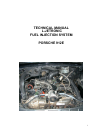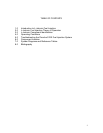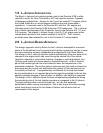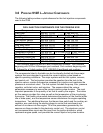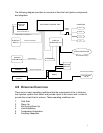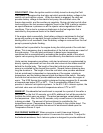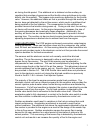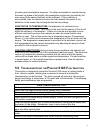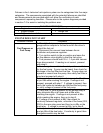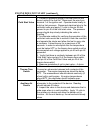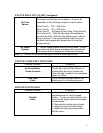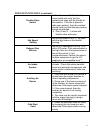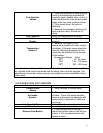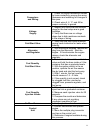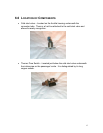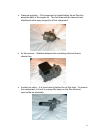
7
air during the idle period. This additional air is obtained via the auxiliary air
regulator that provides a bypass around the throttle valve and allows air to enter
directly into the manifold. This bypass route avoids any deflection by the throttle
valve. However, the additional intake air that is provided through the auxiliary air
device, does get detected by the air-flow sensor, which results in additional fuel
being supplied at the fuel injectors. The compensation for the additional air
provides more air-fuel mixture during warm up. During a cold start, the auxiliary
air device will be wide open. As the engine temperature increases, the size of
the opening decreases and eventually closes altogether. Additionally, the
auxiliary air device has an internal heater that is designed to provide a limited
opening time. The auxiliary air device should remain closed after normal engine
operating temperature is reached due to ambient heat from the engine.
LOAD ADAPTATION: The 912E engine continuously encounters varied engine
loading conditions. These can be broken down into four categories; idle, partial
load, full load, and acceleration. Air flow sensing takes the varied conditions into
account and provides inputs to the electronic control unit that provides the correct
injection duration for the load encountered.
The sensors and the electronic control unit normally control the idle load
condition. The air-flow sensor is designed to allow a small amount of air to
bypass the air flow sensor. The size of this opening can be adjusted to
compensate for lean conditions. This can be accomplished by adjusting the idle-
mixture screw found on the front of the air flow sensor. This adjustment does not
provide additional fuel to the engine, only air. Specific steps for this adjustment
are provided in Section 5.0. The 912E throttle valve switch does not provide an
input to the electronic control unit during the idle load condition as previously
found in the 914 1.8L L-Jetronic Fuel Injection System.
The majority of the time the engine encounters partial load conditions. The
electronic control unit has an internal program for this condition and provides the
correct injection pulse duration when normal driving conditions are detected by
the sensors. If a full load condition is detected, the mixture is enriched to provide
maximum output from the engine. The full load condition is detected by the
throttle valve switch that is connected to the throttle valve shaft. When the
accelerator pedal is fully depressed, a contact in the throttle valve switch is made
and this condition is detected and processed by the electronic control unit.
Sudden acceleration could result in variations in the fuel-air mixture that could
impact performance. Acceleration enrichment is required to avoid fuel-air
mixture problems. The additional fuel above the requirements detected by the air
flow sensor is provided to the engine as a result of the design of the sensor flap
in the air flow sensor. Sudden acceleration causes the sensor flap to swing
beyond its full open position for a short period of time before it returns to the
normal position. This over-swing of the sensor flap is detected by the electronic
control unit and results in an increase the quantity of fuel to the engine and



